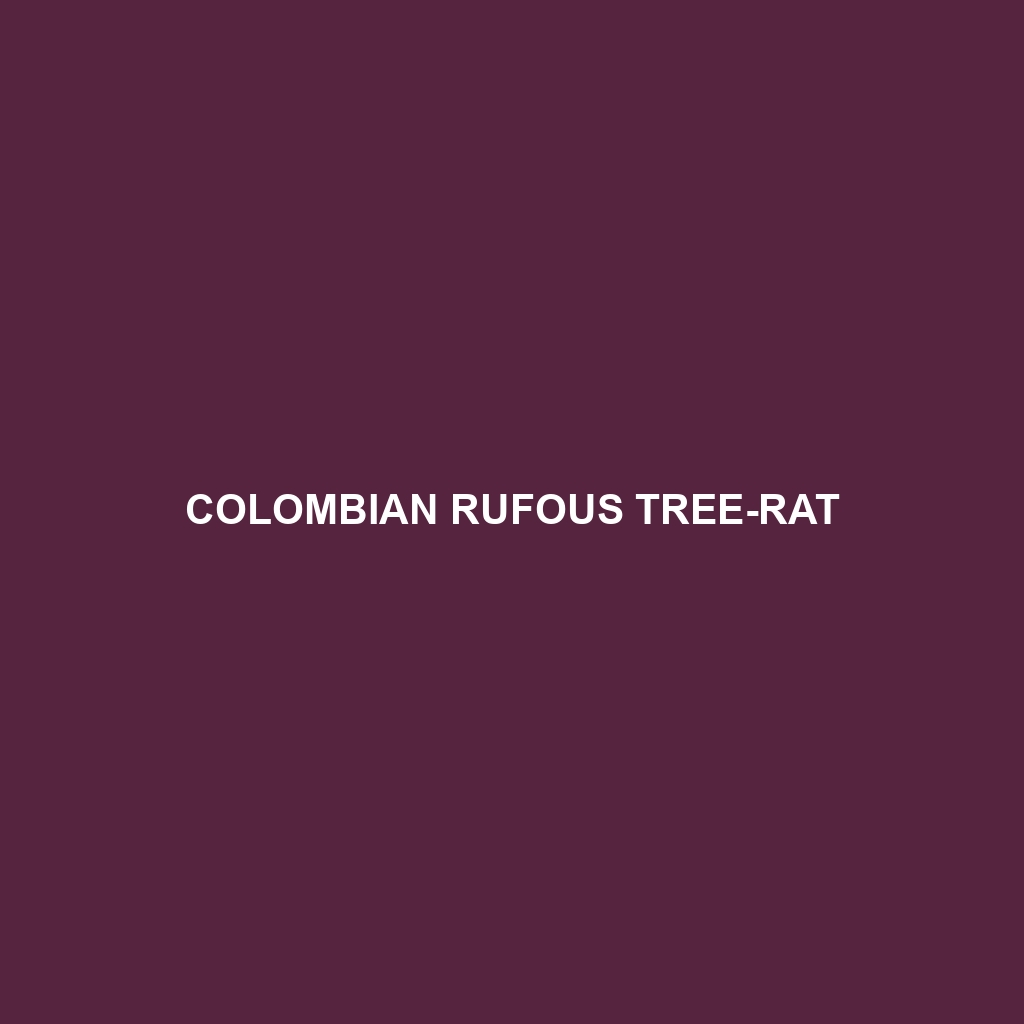Colombian Rufous Tree-rat
Common Name: Colombian Rufous Tree-rat
Scientific Name: Diplomys vancouveri
Habitat
The Colombian Rufous Tree-rat is primarily found in the lush, tropical rainforests of Colombia, specifically within the Andes and surrounding lowland areas. This species thrives in humid conditions and is often associated with montane forests, where dense canopy cover provides the necessary environment for its arboreal lifestyle. Conservation areas like the Parque Nacional Natural Tayrona and the Sierra Nevada de Santa Marta are crucial habitats for this unique rodent.
Physical Characteristics
Commonly, the Colombian Rufous Tree-rat weighs between 200 to 400 grams and measures around 30 to 40 centimeters in length, including its tail. It is distinguished by its rich reddish-brown fur, which provides excellent camouflage in its forested habitat. Notable features include large, rounded ears and a bushy tail that aids in balancing as it navigates the treetops. The species’ strong limbs are adapted for climbing and jumping among branches.
Behavior
This rodent is primarily nocturnal, exhibiting behaviors such as climbing and foraging at night when it is less vulnerable to predators. Colombian Rufous Tree-rats are known for their social structures, often living in small groups. They communicate through various vocalizations and olfactory signals, which play a critical role in their interactions within the dense forest environment.
Diet
The diet of the Colombian Rufous Tree-rat consists mainly of fruits, leaves, seeds, and flowers. They are considered herbivorous rodents and play a vital role in seed dispersion, as they often consume a variety of fruits found within their habitat, thereby contributing to plant regeneration. Their feeding habits can significantly influence the dynamics of plant communities in the forests.
Reproduction
Colombian Rufous Tree-rats have a reproductive season that typically spans from March to September, coinciding with the region’s rainy season, which provides abundant food resources for raising young. After a gestation period of approximately 30 days, females usually give birth to litters of 2 to 4 pups. The youngsters are nurtured in the nest until they are old enough to accompany their mothers on foraging excursions.
Conservation Status
The Colombian Rufous Tree-rat is currently listed as vulnerable due to habitat loss and fragmentation. Ongoing deforestation for agriculture and urban expansion poses significant threats to its survival. Conservation efforts are being implemented to protect its remaining habitats and to promote awareness about this unique species.
Interesting Facts
One fascinating aspect of the Colombian Rufous Tree-rat is its ability to glide short distances thanks to its specially adapted flaps of skin between its limbs, which aid in maneuvering through the trees. Additionally, this species is rarely observed in the wild, making it a subject of interest for zoologists and wildlife enthusiasts alike.
Role in Ecosystem
The Colombian Rufous Tree-rat plays a crucial role in its ecosystem as both a seed disperser and a prey species for larger carnivores. By feeding on various fruits and seeds, it helps maintain the diversity of plant species within its habitat, thus contributing to the overall health and stability of tropical forest ecosystems. Its presence indicates a healthy forest environment, which is essential for many other species.
